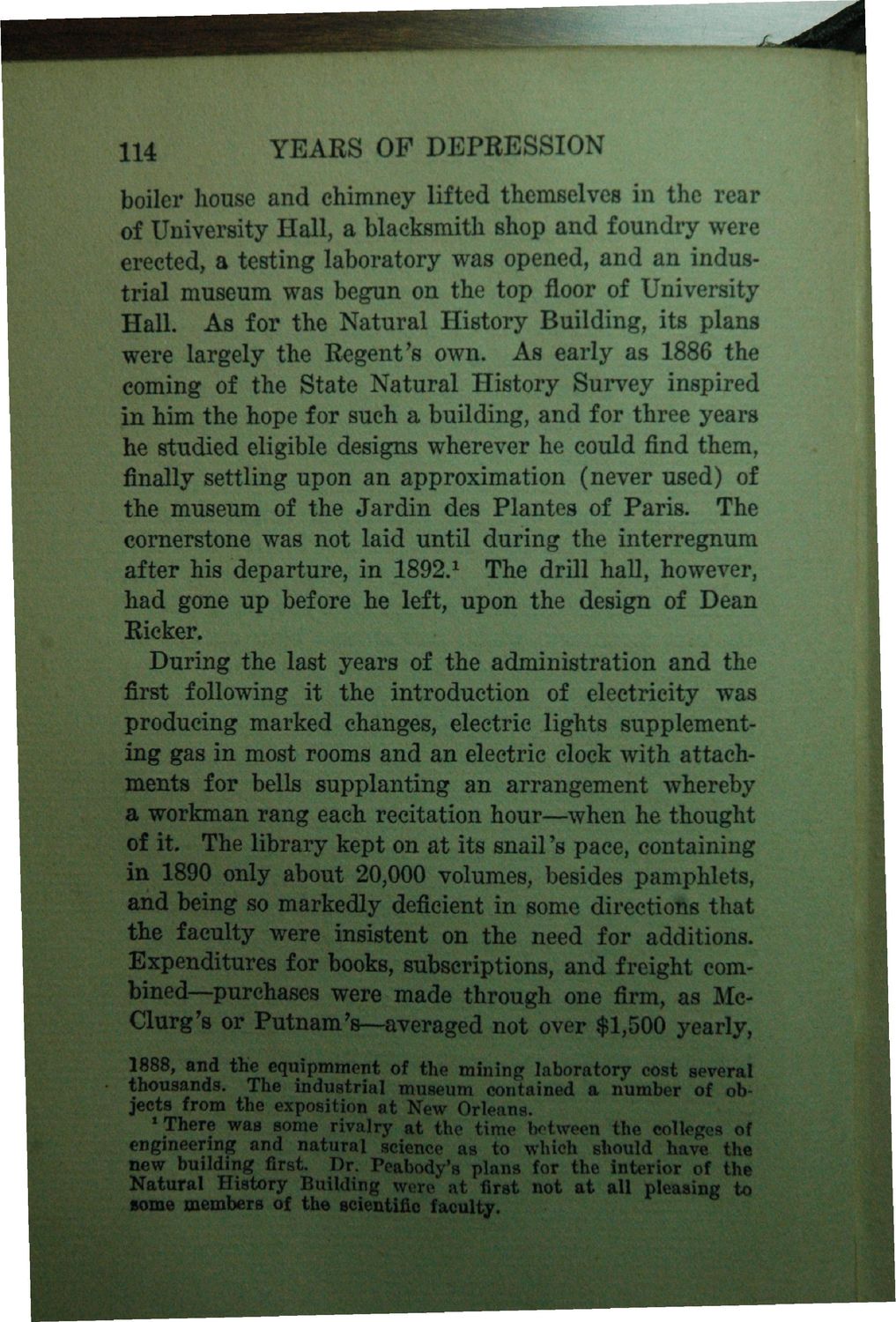| |
| |
Caption: Book - History of the University (Nevins)
This is a reduced-resolution page image for fast online browsing.

EXTRACTED TEXT FROM PAGE:
114 YEARS OF DEPRESSION boiler house and chimney lifted themselves in the rear of University Hall, a blacksmith shop and foundry were erected, a testing laboratory was opened, and an industrial museum was begun on the top floor of University Hall. As for the Natural History Building, its plans were largely the Regent's own. As early as 1886 the coming of the State Natural History Survey inspired in him the hope for such a building, and for three years he studied eligible designs wherever he could find them, finally settling upon an approximation (never used) of the museum of the Jardin des Plantes of Paris. The cornerstone was not laid until during the interregnum after his departure, in 1892.1 The drill hall, however, had gone up before he left, upon the design of Dean Ricker. During the last years of the administration and the first following it the introduction of electricity was producing marked changes, electric lights supplementing gas in most rooms and an electric clock with attachments for bells supplanting an arrangement whereby a workman rang each recitation hour—when he thought of it. The library kept on at its snail's pace, containing in 1890 only about 20,000 volumes, besides pamphlets, and being so markedly deficient in some directions that the faculty were insistent on the need for additions. Expenditures for books, subscriptions, and freight combined—purchases were made through one firm, as McClurg's or Putnam's—averaged not over $1,500 yearly, 1888, and the equipmment of the raining laboratory cost several thousands. The industrial museum contained a number of objects from the exposition at New Orleans. i There was some r^ralry at the time between the colleges of engineering and natural science as to which should have the new building first. Dr. Peabody's plans for the interior of the Natural History Building were at first not at all pleasing to some members of the scientific faculty.
| |